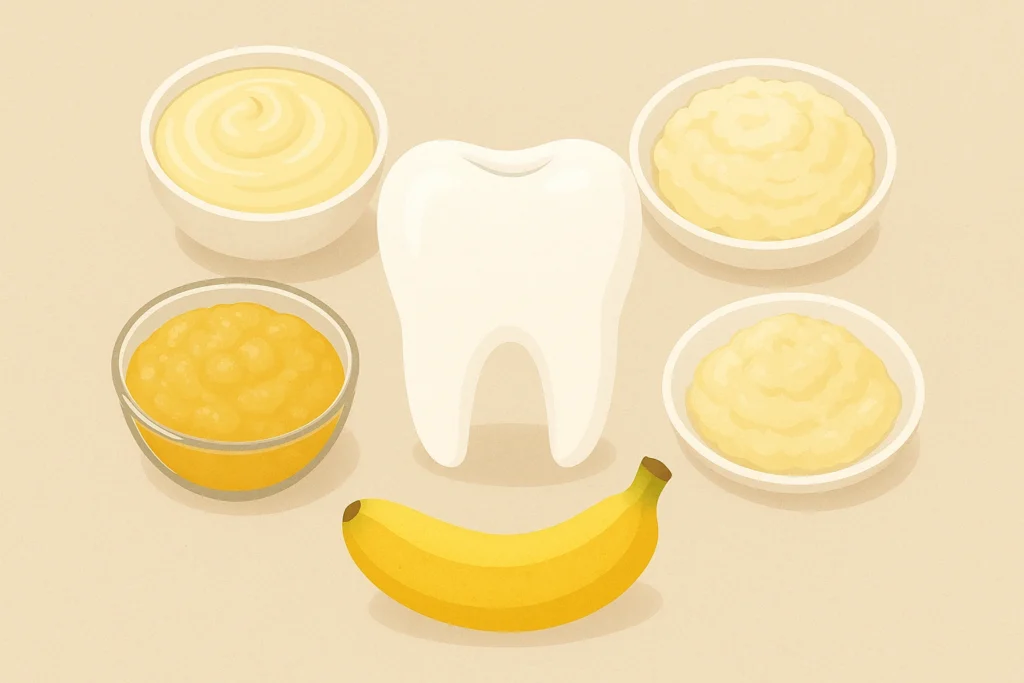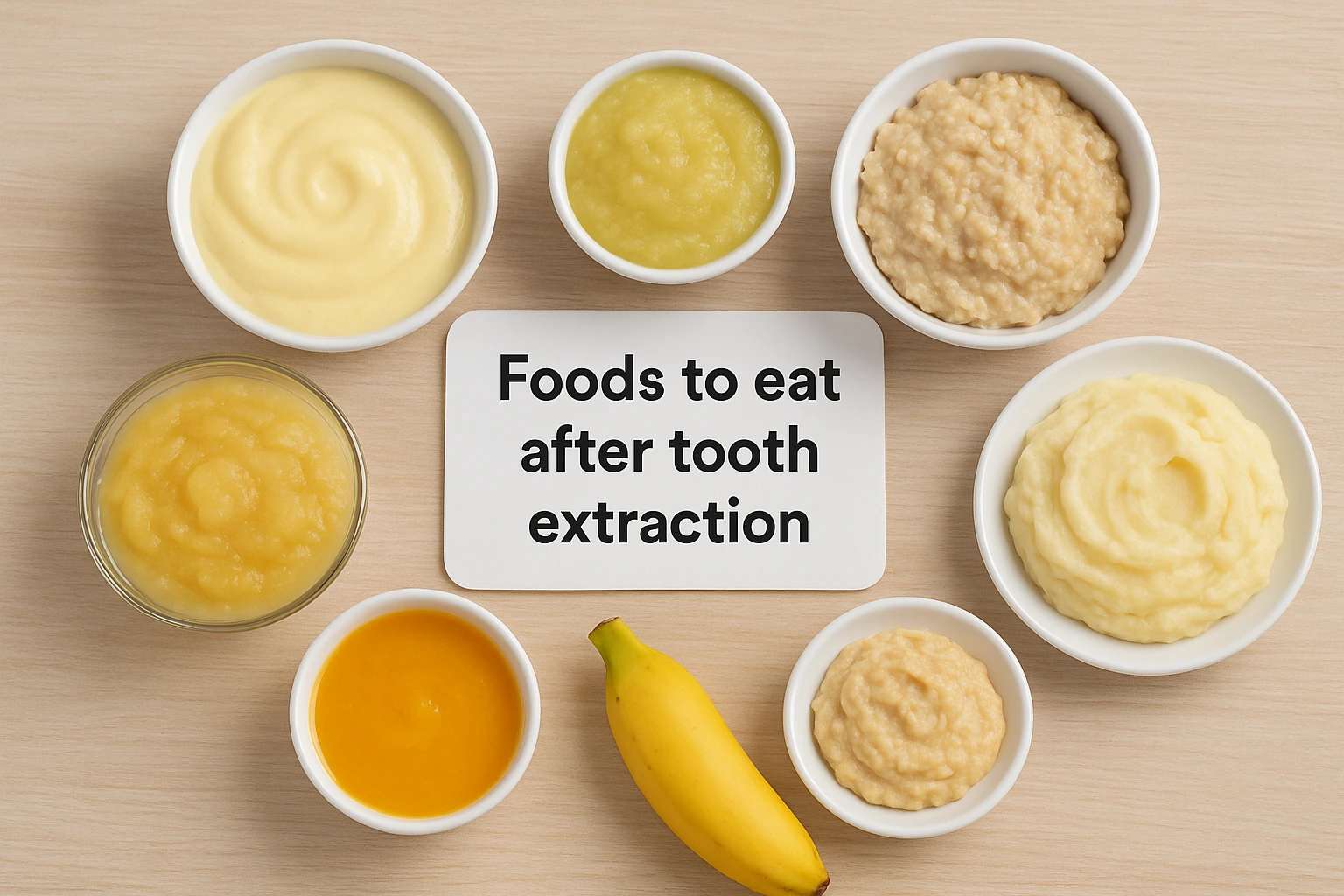Recovering after having a tooth pulled, or tooth extraction, is all about giving your mouth time to heal. Your dentist’s advice is the most important thing to follow, but you’ll likely have questions like, “When can I eat?” and “What foods should I avoid?”
The general rule is to be gentle with your mouth, especially around the surgical site, for the first week or two. This is true whether you had a regular tooth or a wisdom tooth removed. If your surgery was more complicated, your recovery might take a little longer. Foods to eat after tooth extraction.
Soft foods to eat after tooth extraction
The first two days are the most critical for healing. Your body needs to form a blood clot where the tooth was, and this clot acts like a protective scab. You must avoid anything that could dislodge it, which can lead to a painful condition called dry socket.
Immediately After Surgery
- Avoid eating for the first four hours to allow the blood clot to start forming.
- Do not eat while your mouth is numb. You could accidentally bite your cheek or tongue without realizing it.
- Do not spit, rinse, or suck (this includes using a straw) for at least 24 hours, as these actions can pull the clot out.
What to Eat (and Avoid)
For the first 24 to 48 hours, your diet should consist of very soft, mild, and non-chewy foods. Foods to eat after tooth extraction.
| Good Foods to Eat | Foods to AVOID |
| Smoothies (no straw) | Very hot or very cold food/drink |
| Yogurt and soft dairy (like cottage cheese) | Spicy foods (chili, curry, pepper) |
| Mashed potatoes | Crunchy foods (chips, popcorn, nuts, toast, brittle) |
| Scrambled eggs | Sticky foods (toffee, gum) |
| Blended soup (lukewarm) | Acidic drinks (soda, energy drinks, citrus juice) |
| Ice cream and soft desserts like custard/jelly (no crunchy bits) | Very chewy foods (meat, bagels, jerky) |

Drinks and Temperature
Just like with food, drinks need to be gentle on your mouth.
What to Drink
Stick to lukewarm or room-temperature beverages for the first 48 hours. Water is perfect for staying hydrated.
What to Avoid
- Hot drinks (like hot coffee or tea) should be avoided for the first 48 hours because they can cause pain and irritation. Let them cool down first.
- Caffeine should generally be avoided for the first few days (around five) because it can increase blood pressure and the risk of bleeding.
- Avoid alcohol for at least one week.
- Fizzy/acidic drinks (soda, energy drinks, citrus juice) should be avoided for about a week as the acid and bubbles can bother the surgical site.
When Can I Go Back to Normal Food?
Most people can slowly start adding their regular foods back into their diet after 48 hours, but you’ll likely feel comfortable eating completely normally after about one week. Listen to your body and your dentist.
Foods to Avoid for a Week or More
To keep the healing site safe from irritation and infection, continue to avoid these foods for at least a week, and sometimes up to 2-4 weeks, especially those that can get stuck in the hole:
- Small, hard bits: Seeds, nuts, and grains (like rice or quinoa).
- Crunchy/Crumbly foods: Popcorn, chips, crispy cereals, crunchy bread.
- Tough/Chewy foods: Big burgers, chewy steak or jerky, tough pizza crusts.
- Spicy and Acidic foods/drinks.
Example Foods and When to Reintroduce Them
- Rice, Pasta, and Noodles: These are often soft enough, but it’s safest to wait the full 24–48 hours before eating to make sure they don’t get stuck in the socket.
- Chicken: When you reintroduce meat, make sure it is very soft and doesn’t require hard chewing.
- Soup: Excellent food, just make sure it’s not hot and doesn’t have big chunks or irritating spices.
- Bread: Soft bread is usually fine, but avoid seeded, crunchy, or very chewy varieties like bagels for a few days.
Other Important Recovery Tips
Brushing
You’ll need to avoid brushing your teeth on the day of the surgery. You can start gently brushing again after the first 24 hours, but be very careful around the extraction site.
Swelling
To help reduce swelling:
- For the first 24 hours, apply a cold compress (like ice or frozen vegetables wrapped in a towel) to your face in 10-minute intervals.
- After the first 24 hours, you can switch to a warm heating pad or hot water bottle (wrapped in a towel) to increase blood flow and help with swelling.
By sticking to a diet of delicious, soft, and healthy foods for the first week, and being careful to avoid anything that could disrupt the blood clot, you’ll feel more comfortable and ensure a quick recovery!

